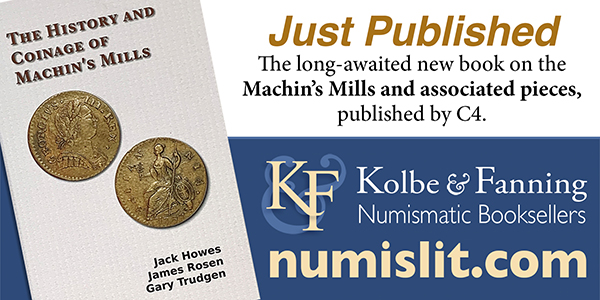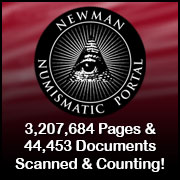
About UsThe Numismatic Bibliomania Society is a non-profit association devoted to the study and enjoyment of numismatic literature. For more information please see our web site at coinbooks.org SubscriptionsThose wishing to become new E-Sylum subscribers (or wishing to Unsubscribe) can go to the following web page link MembershipThere is a membership application available on the web site Membership Application To join, print the application and return it with your check to the address printed on the application. Print/Digital membership is $40 to addresses in the U.S., and $60 elsewhere. A digital-only membership is available for $25. For those without web access, write to: Charles Heck, Treasurer AsylumFor Asylum mailing address changes and other membership questions, contact Chuck at this email address: treasurer@coinbooks.org SubmissionsTo submit items for publication in The E-Sylum, write to the Editor at this address: whomren@gmail.com
BUY THE BOOK BEFORE THE COINSale Calendar
|
- WAYNE'S WORDS: THE E-SYLUM JANUARY 31, 2021
- ANS LIBRARY DUPLICATES AVAILABLE ON EBAY
- NEW BOOK: GUIDE BOOK OF CONTINENTAL CURRENCY
- NEW BOOK: CONFIDENT CARSON CITY COIN COLLECTOR
- NEW BOOK: THE SPECIALLY MERITORIOUS MEDAL
- NEW BOOK: MÜNZKABINETT - PEOPLE, COINS, MEDALS
- ALEXANDRE VATTEMARE ADDENDA REDISCOVERED
- VIDEO: FUN COIN CONVENTION 2001
- NOTES FROM E-SYLUM READERS: JANUARY 31, 2021
- WHITMAN MARCH 2021 BALTIMORE EXPO CANCELLED
- STACK'S BOWERS MARCH 2021 AUCTION MOVES TO VEGAS
- UPCOMING ANA ELEARNING ACADEMY CLASSES
- VOCABULARY TERM: COLLAR
- HENRY CLAY BOWMAN (1842-1925)
- HARVEY STACK'S NUMISMATIC FAMILY, PART 88
- ART BERNSTEIN APPOINTED TO THE CCAC
- LOUIS GOLINO: 10 YEARS OF MODERN NUMISMATICS
- DAVISSONS ANNOUNCES E-AUCTION 40
- MORE HUNTER COLLECTION COLONIAL NOTES
- HERITAGE OFFERS NEW YORK NATIONAL BANKNOTES
- AIZANOI TURKEY COIN HOARD FOUND
- THE DIG - UNEARTHING THE SUTTON HOO TREASURE
- THE 2021 MORGAN DOLLAR
- HARD TIMES TOKENS AND SCRIP
- NUMISMATIC COMMEMORATIONS OF VACCINATION
- NEW MOMENTUM TO PUT HARRIET TUBMAN ON $20 BILL
- RAID NETS UK'S LARGEST COUNTERFEIT SEIZURE
- HONG KONG COUNTERFEIT BANKNOTES RISING
- LOOSE CHANGE: JANUARY 31, 2021
Click here to read the thin version on the web
Click here to subscribe
Click here to access the complete archive
To comment or submit articles, reply to whomren@gmail.com
Content presented in The E-Sylum is not necessarily researched or independently fact-checked, and views expressed do not necessarily represent those of the Numismatic Bibliomania Society.
WAYNE'S WORDS: THE E-SYLUM JANUARY 31, 2021
 New subscribers this week include:
Bill "Buck" Rogers, courtesy Bruce Perdue;
Matthew Chiarello, and
Georges Depeyrot.
Welcome aboard! We now have 6,605 subscribers.
New subscribers this week include:
Bill "Buck" Rogers, courtesy Bruce Perdue;
Matthew Chiarello, and
Georges Depeyrot.
Welcome aboard! We now have 6,605 subscribers.
Thank you for reading The E-Sylum. If you enjoy it, please send me the email addresses of friends you think may enjoy it as well and I'll send them a subscription. Contact me at whomren@gmail.com anytime regarding your subscription, or questions, comments or suggestions about our content.
This week we open with an ANS library duplicate sale, four new books, updates from the Newman Numismatic Portal, coin show and auction news and more.
Other topics this week include Alexandre Vattemare, the FUN show, ANA online classes, a new CCAC member, upcoming auctions, treasure hunting (and finding), Hard Times Tokens, the 2021 Morgan dollar, counterfeit banknote seizures, Harriet Tubman, and numismatic commemorations of vaccination.
To learn more about Continental Currency, Carson City coinage, the Specially Meritorious Medal, whirligigs, Half Cents, the Black Death, tri-segmented collars, the Detmer Collection, the Henry I Quatrefoil Penny, the Boston School Medal, the Revere "Sword in Hand" note, the Sutton Hoo, and the New York Fed gold vault, read on. Have a great week, everyone!
Wayne Homren
Editor, The E-Sylum

ANS LIBRARY DUPLICATES AVAILABLE ON EBAY
The American Numismatic Society has an eBay store, and this week they will be offering library duplicates for sale. -Editor
Library Duplicates available on the ANS eBay store
?We will begin adding duplicates from the ANS's Harry Bass Library to our eBay store, beginning next Tuesday evening (2/2) with some auction catalogs. All lots start at $1. This week we will post auction catalogs from Ratto, L. Hamburger, J. Hamburger, Frankfurter, and Calicó (Asociación Numismatica Española). Also included is the Canessa catalog of the gold portion of opera tenor Enrico Caruso's collection.
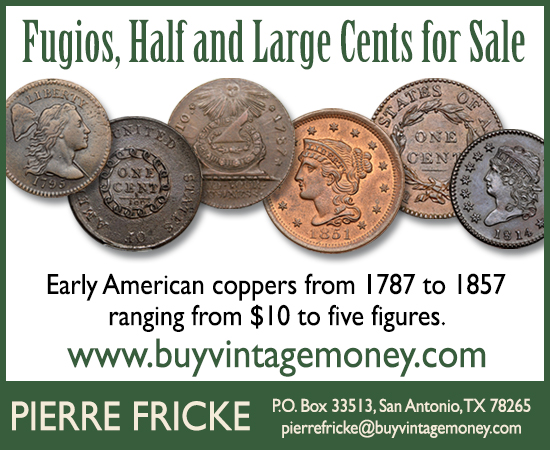
NEW BOOK: GUIDE BOOK OF CONTINENTAL CURRENCY
The latest Whitman Publishing book by Q. David Bowers, the Guide Book of Continental Currency and Coins, will debut in early March 2021. The 288-page book, volume 25 in the popular Bowers Series of numismatic references, will be available from bookstores and hobby shops and online (including at Whitman.com) for $19.95. Here, Whitman publisher Dennis Tucker discusses the scope of the new book. -Editor
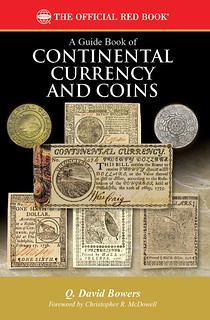 Continental Currency, the Dream of American Independence, and Connecting Cash to History
Continental Currency, the Dream of American Independence, and Connecting Cash to History
New Q. David Bowers Book Explores the Money of the Revolution
by Dennis Tucker
As a publisher and a numismatist, I'm always on the lookout for "coin books" that can leap from the hobbyist world of antiques and collectibles into the bigger river of mainstream American history. This goal is more elusive than you might expect. But the potential is always there, because the pleasures of coin collecting and the pleasures of studying history are so closely related.

NEW BOOK: CONFIDENT CARSON CITY COIN COLLECTOR
Marie Goe of Southgate Coins and Collectibles submitted this announcement of Rusty Goe's new three-volume work. Thanks! Wow. -Editor
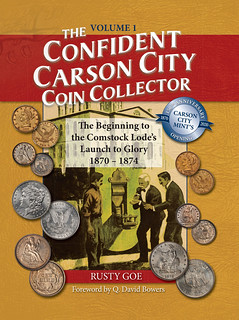 The Confident Carson City Coin Collector
The Confident Carson City Coin Collector
Three volumes, 2,500 pages
Hardbound
Color images
$299 plus $16 shipping
I wanted to give E-Sylum readers a few words about Rusty's new book. He has spent more than ten years working on it. For the past three and a half years he has relentlessly pursued its completion. As expected, 2020 proved to be a very challenging year. Rusty experienced many setbacks in his book project along the way. He never gave up, though.
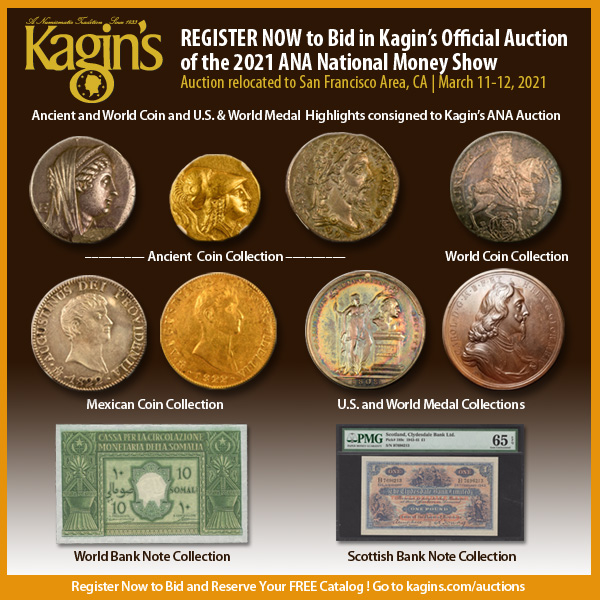
NEW BOOK: THE SPECIALLY MERITORIOUS MEDAL
Nick McDowell of Foxfall Medals submitted this announcement of a new monograph on the U.S. Navy's Specially Meritorious Medal. Thanks! -Editor
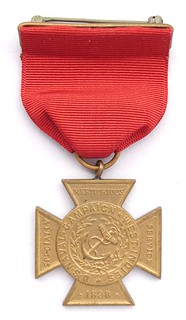
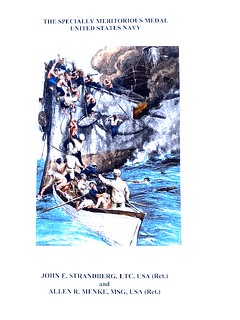
THE BOOK BAZARRE
NEW BOOK: MÜNZKABINETT - PEOPLE, COINS, MEDALS
Battenberg Verlag has published a new book by Bernhard Weisser on the coin collection of the State Museums in Berlin. Found via the Geldscheine-Online newsletter. Here's a Google-translated description. -Editor
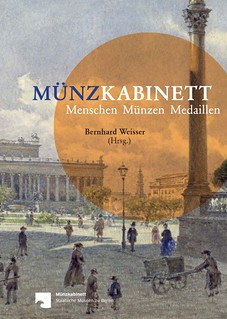 Bernhard Weisser
Bernhard Weisser
Münzkabinett - people, coins, medals
Published by Battenberg Verlag
ISBN: 978-3-86646-202-1
Edition: 1st edition 2020
Images: color throughout
Hardcover: 384 pages
Format: 17 x 24 cm
The origins of the collections of the Münzkabinett (Coin Cabinet) of the State Museums in Berlin go back to the electoral art chamber of the 16th century. The Münzkabinett has been an independent museum since 1868. The 150th anniversary and an associated exhibition provided an opportunity to reflect on the history of the largest and most important collection of old money in Germany. The focus was particularly on the people who are associated with the Münzkabinett. The publication, in which twelve authors participated, is also understood as a determination of the position at a time in which museums are exposed to new challenges.

ALEXANDRE VATTEMARE ADDENDA REDISCOVERED
The latest addition to the Newman Numismatic Portal is an 1864 article on Hard Times Tokens by Alexandre Vattemare. Project Coordinator Len Augsburger provided the following report. -Editor
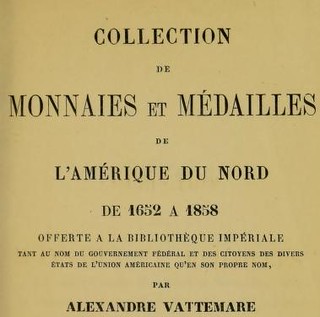 Wayne Homren recently purchased a DVD compilation of public domain works on numismatics. The description of this offering included a work on American numismatics by Alexandre Vattemare, dated 1864. Vattemare's 1861 volume, Collection de Monnaies et Médailles de L'Amérique du Nord de 1652 a 1858, is well-known and represents one of the earliest catalogs of U.S. coinage. This 1864 work was completely unknown to Wayne, or Len Augsburger.
Wayne Homren recently purchased a DVD compilation of public domain works on numismatics. The description of this offering included a work on American numismatics by Alexandre Vattemare, dated 1864. Vattemare's 1861 volume, Collection de Monnaies et Médailles de L'Amérique du Nord de 1652 a 1858, is well-known and represents one of the earliest catalogs of U.S. coinage. This 1864 work was completely unknown to Wayne, or Len Augsburger.
After receiving the DVD, Wayne discovered, with the help of the numismatist's friend Google, that the 1864 work was actually an article published by Vattemare in the Revue Numismatique for that year. This article expands upon and reorganizes Vattemare's chapter on Hard Times tokens from the 1861 book. Vattemare perhaps envisioned a second edition of the 1861 volume, but was able to publish only this revised chapter.
See also Q. David Bowers' Alexandre Vattemare and the Numismatic Scene (Stack's Bowers, 2018), with foreword by David Gladfelter, and The Extravagant Ambassador (Boston Public Library, 2007), which includes an article by Alan Stahl, "Vattemare and Numismatics."
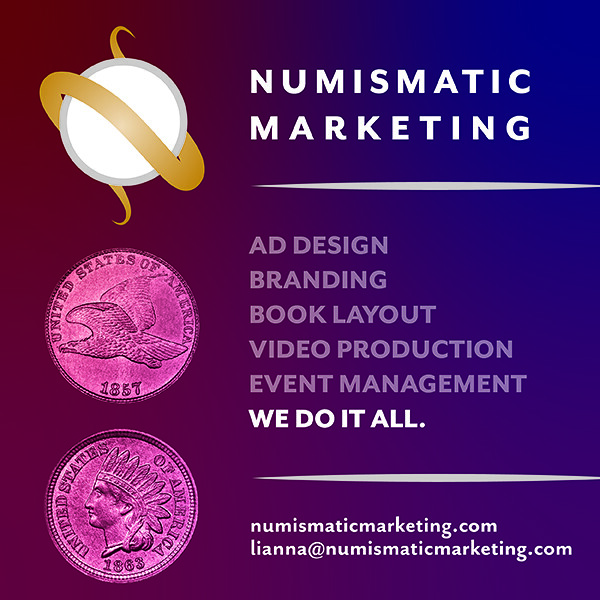
VIDEO: FUN COIN CONVENTION 2001
These are selections from the David Lisot Video Library that feature news and personalities from the world of coin collecting. David has been attending coin conventions since 1972 and began videotaping in 1985. The Newman Numismatic Portal now lists all David's videos on their website at:
https://nnp.wustl.edu/library/multimediadetail/522852
Here's one on the 2001 FUN Coin Convention. -Editor
FUN Coin Convention 2001
Video Producer: David Lisot
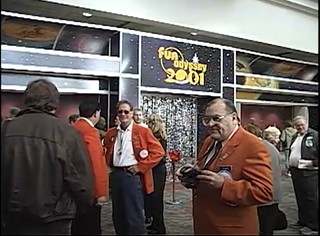 Are you are bored with being isolated from the COVID Virus and not being able to get out of the house? If you like numismatics and the people involved this video is for you! This is unedited footage from Florida United Numismatists Convention 2001. You will see collectors and dealers from 20 years ago. So if you go to the FUN Convention or know people who do you might get some chuckles! It lasts more then an hour so just tune in and enjoy.
Are you are bored with being isolated from the COVID Virus and not being able to get out of the house? If you like numismatics and the people involved this video is for you! This is unedited footage from Florida United Numismatists Convention 2001. You will see collectors and dealers from 20 years ago. So if you go to the FUN Convention or know people who do you might get some chuckles! It lasts more then an hour so just tune in and enjoy.
The video is available for viewing on the NNP at:
https://nnp.wustl.edu/library/book/584241
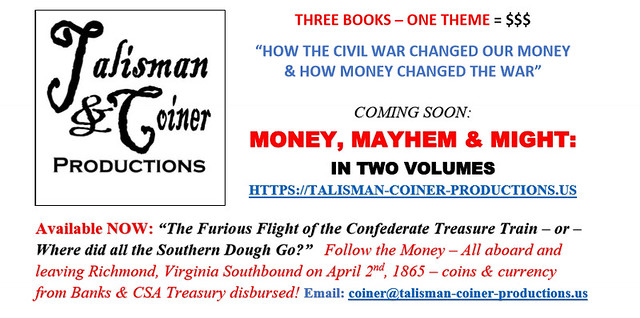
NOTES FROM E-SYLUM READERS: JANUARY 31, 2021
Coin Whirligigs
John Phipps writes:
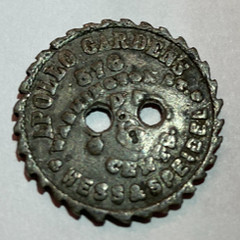 "When I was a kid and reading Boy's Life and Popular Mechanics regularly, I remember seeing an article on how to make a clock by hand (like a mechanical Heathkit project). At the time, my father and I were both coin collectors and into working on shop projects in the garage so we both noticed it. We weren't interested in this project so my memory is nothing more than noticing the article. So maybe some of these "pie crimpers" are "gears" for a clock or other whirligig. That might explain the one with two holes."
"When I was a kid and reading Boy's Life and Popular Mechanics regularly, I remember seeing an article on how to make a clock by hand (like a mechanical Heathkit project). At the time, my father and I were both coin collectors and into working on shop projects in the garage so we both noticed it. We weren't interested in this project so my memory is nothing more than noticing the article. So maybe some of these "pie crimpers" are "gears" for a clock or other whirligig. That might explain the one with two holes."
Dave Karstaedt writes:
"The 2 holed pie crimper is neither a pie crimper nor a button. It is a child's toy called a whizzer. These are commonly found on colonial and early sites. They are often made of lead discs but can also be made from coins. The edges are often cut or serrated. A string is threaded through the holes in a special way. Then the whizzer is wound up then the string is pulled back and forth making the disc spin fast. This causes a whistling sound."
John Sallay writes:
"The piece pictured in last week's E-Sylum in "Merriam Token Two-Holed Pie Crimper" is not a pie crimper, but a spinner, created as a toy for a child (or a numismatist with too much time on his hands). These have been made for hundreds, maybe thousands of years, though I've never seen an ancient coin made into one. They are also sometimes called button spinners, thread spinners, buzzers, whirligigs, and probably other things as well. In this case the edges are notched to create a buzzing sounds as it rotates at high speed."
A video is worth thousands of words. John kindly included links to a couple of excellent YouTube videos of multi-holed whirligigs in action. Thanks! Check 'em out. The second one has more discussion, plus some discussion of different types. -Editor
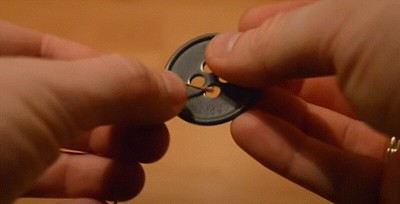
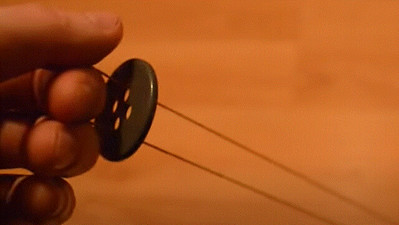
To watch the videos, see:
Thread Spinner - The Button-Thread Toy - Buzz Saw Toy
(https://www.youtube.com/watch?v=-QMmfDhrZxg)
Button Spinners
(https://www.youtube.com/watch?v=KBNjnvVHtX4)
To read the earlier E-Sylum article, see:
NOTES FROM E-SYLUM READERS: JANUARY 24, 2021 : Merriam Token Two-Holed Pie Crimper
(https://www.coinbooks.org/v24/esylum_v24n04a18.html)
Other topics this week include Tulsa Race Massacre Numismatic Survivors, the Japan Craze, and Churchill in a Military Cap. -Editor

WHITMAN MARCH 2021 BALTIMORE EXPO CANCELLED
Another major coin show has fallen victim to the pandemic. Here's the press release. -Editor
 The March 25–27, 2021, Whitman Coin & Collectibles Baltimore Expo will not be held as Maryland continues to mitigate the COVID-19 coronavirus pandemic. The Baltimore Convention Center notified Whitman Coin & Collectibles that the event was canceled for March 2021.
The March 25–27, 2021, Whitman Coin & Collectibles Baltimore Expo will not be held as Maryland continues to mitigate the COVID-19 coronavirus pandemic. The Baltimore Convention Center notified Whitman Coin & Collectibles that the event was canceled for March 2021.
The show's manager plans an expanded "MEGA Bourse" for the June 3–5 Expo, one of the largest numismatic events of the year. It will be held at its regular venue, the Baltimore Convention Center.
Whitman Expo manager Lori Kraft said, "After a long winter, we know that collectors and dealers are eager to get back to business as usual. Nothing beats the excitement of attending a major show in person—and our summer Baltimore Expo will be MEGA."
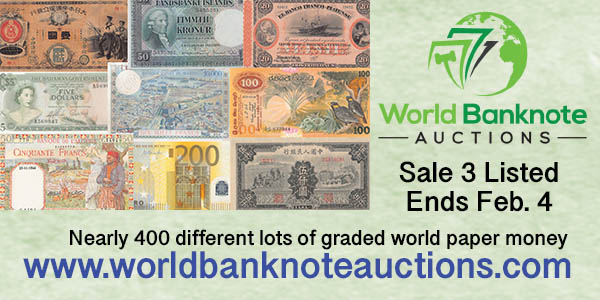
STACK'S BOWERS MARCH 2021 AUCTION MOVES TO VEGAS
Stack's Bowers Galleries is moving their March 2021 sale to Las Vegas. Here's the press release. -Editor

Stack's Bowers Galleries' March 2021 Auction has been relocated and will now be held in Las Vegas, March 23-26 at the Bellagio Hotel and Casino, in coordination with the PCGS Substitute Members Only Show. Lot viewing will take place in California, New York and at the convention venue with dates to be announced. Specific session details will also be forthcoming as the sale date approaches.
"As the Baltimore Convention Center remains closed, we are pleased to once again be associated with the PCGS Substitute Members Only Show in Las Vegas," said Brian Kendrella, president of Stack's Bowers Galleries.

UPCOMING ANA ELEARNING ACADEMY CLASSES
As announced earlier, the ANA's new eLearning Academy is open for registration. Here are some upcoming sessions. -Editor
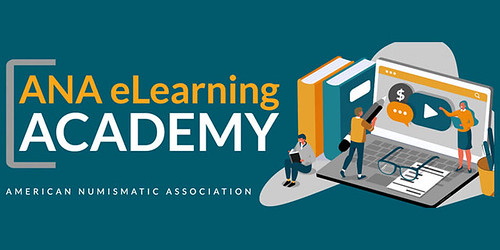
Enjoy live online courses and lectures from fellow collectors and professional numismatists. Webinars are free and open to the public unless otherwise noted. Register now—space is limited!
The Production Technology of Ancient Coinage
For the production of ancient coinage, it was well-known that form follows function. In order to produce a legal coin, it was necessary to have the correct materials and strict controls for its standardized design and production. It is then that the legitimate authority (emperor, empire) approves the striking of a disk or lump of metal, of a certain purity and weight, to produce to official coin that can be used as legal tender. The authority certifies that the newly minted coin is the legal currency, at least within the area governed by that power.

VOCABULARY TERM: COLLAR
Here's another entry from Dick Johnson's Encyclopedia of Coin and Medal Terminology. It's technical, but well worth a read to learn some of the intricacies of coin striking. -Editor
Collar. A large flat disk or ring – made solid or of multiple segments – with an opening in the center, an aperture of prescribed diameter and machined on the inner wall surface to the requirements of the pieces to be struck. It is the collar that imparts to all coined pieces the shape of their edge: smooth or reeded. All coining dies are collar dies, that is, they are made to strike coins inside the collar, the neck of each die is slightly smaller than the width of the aperture. Also, all coining presses require some form of collar, and have for as long as coins have had uniform edges, certainly since the 1400s. In contrast, medal presses have employed collars – some still do – however, since 1900 most medal presses have utilized open face dies that do not need collars.
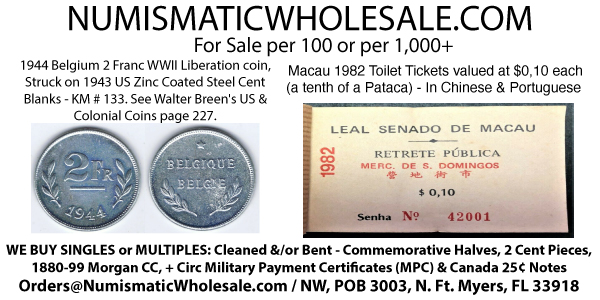
HENRY CLAY BOWMAN (1842-1925)
Here's another entry from the online draft of John Lupia's book of numismatic biographies. Thanks! This is an excerpt with the full article and bibliography available online. This week's subject is collector Henry Clay Bowman of Pennsylvania and Ohio. -Editor
Henry Clay Bowman (1842-1925), was born on October 28, 1842, at Lebanon, Pennsylvania, son of Michael Bowman (1802-1855), and Jane Tennis Bowman (1811-1892).
He served with the Pennsylvania Volunteers during the Civil War.
On November 24, 1872, he married Sophia Sperber (1850-1921), at Des Moines, Iowa. They had six children...
He went into partnership in the crockery business with his older brother Israel Tennis Bowman (1835-1922), in a firm called the Bowman Brothers.

HARVEY STACK'S NUMISMATIC FAMILY, PART 88
The latest article in Harvey Stack's blog series opens with the year 1983. Thanks. -Editor
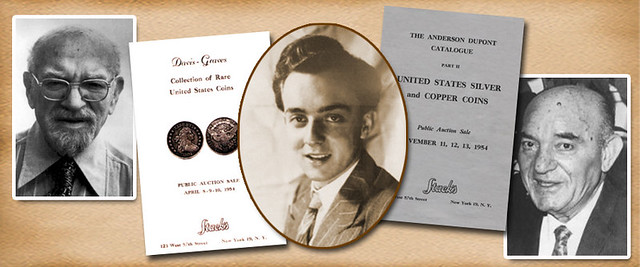
1983 was a super year for Stack's. The markets got stronger, old time collectors had their confidence strengthened, and an avalanche of new enthusiasts seemed to enter the hobby, Stack's experienced a great growth in business, both over the counter and at our auctions, with overall results during this year that were outstanding.
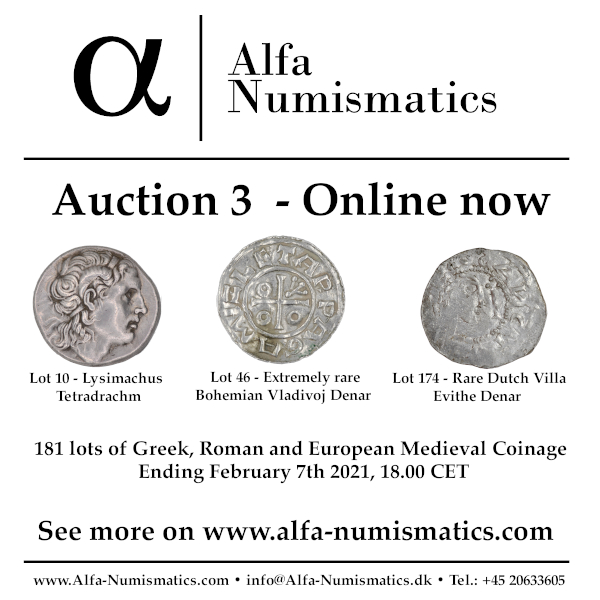
ART BERNSTEIN APPOINTED TO THE CCAC
In a press release published January 29, 2021, the U.S. Mint announced the appointment of Art Bernstein to the CCAC. Welcome! -Editor
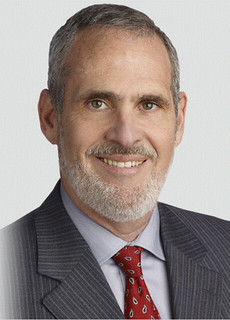 The United States Mint today announced the appointment of Arthur (Art) Bernstein to the Citizens Coinage Advisory Committee (CCAC) as one of three members appointed to represent the interests of the general public. Mr. Bernstein fills the vacancy created by the term expiration of Jeanne Stevens-Sollman who served two terms on the CCAC from 2012 to 2021. Mr. Bernstein's term is four years.
The United States Mint today announced the appointment of Arthur (Art) Bernstein to the Citizens Coinage Advisory Committee (CCAC) as one of three members appointed to represent the interests of the general public. Mr. Bernstein fills the vacancy created by the term expiration of Jeanne Stevens-Sollman who served two terms on the CCAC from 2012 to 2021. Mr. Bernstein's term is four years.
A passionate numismatist who enjoys sharing stories of his coin and banknote collections, Bernstein currently serves as the Chief Operating Officer at the law firm of Tucker Ellis LLP, based in Cleveland, Ohio.
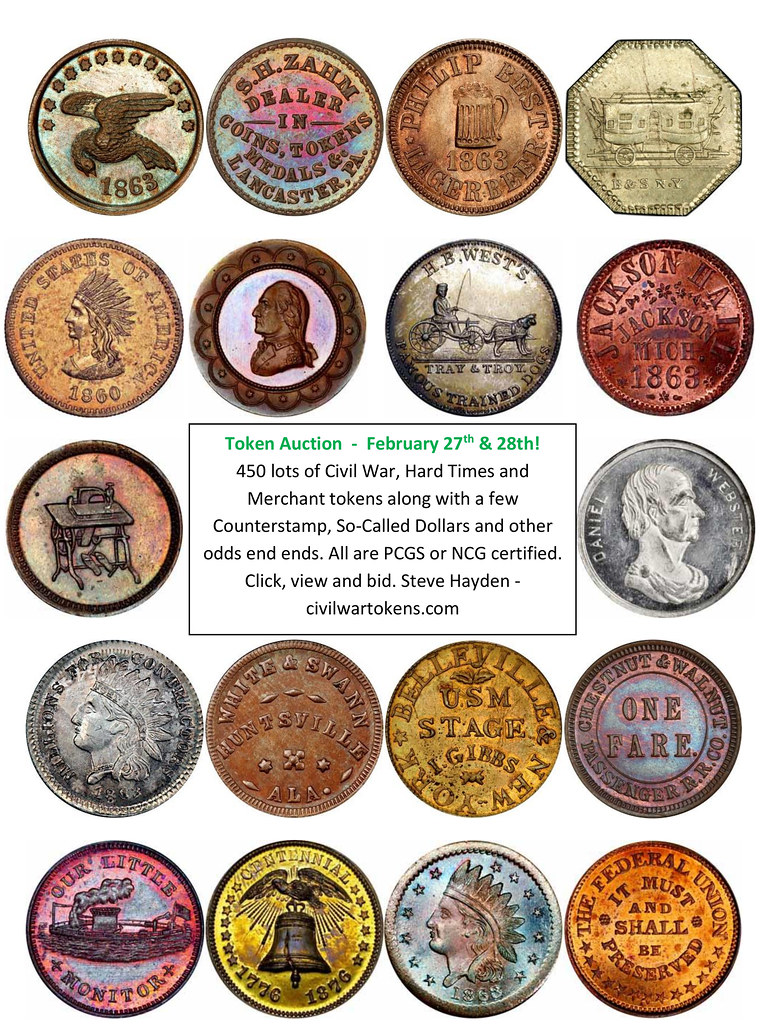
LOUIS GOLINO: 10 YEARS OF MODERN NUMISMATICS
Congratulations to Louis Golino on ten years writing columns on modern numismatics. His latest article summarizes that work. Here's an excerpt - see the complete article online. -Editor
 On January 7, 2011, I wrote an inaugural column for Coin Update about a new column that would cover developments in U.S. coins and in the American numismatic hobby and market.
On January 7, 2011, I wrote an inaugural column for Coin Update about a new column that would cover developments in U.S. coins and in the American numismatic hobby and market.
It has been an honor and a pleasure over the past decade to write on these topics and not just discuss developments in coins and why they were important but to learn a great deal from other collectors. Thanks to some interesting discussions with my readers here, especially when my pieces also appeared on Mint News Blog and World Mint News Blog, I now count some of those readers as valued friends.
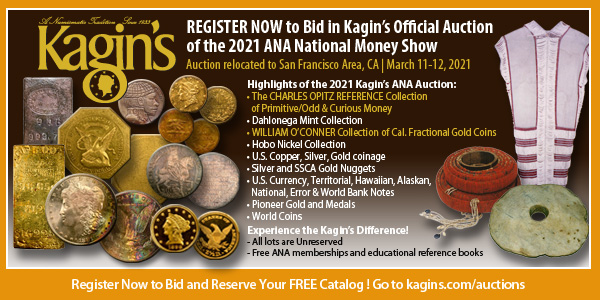
DAVISSONS ANNOUNCES E-AUCTION 40
In a January 29, 2021 email, Allan Davisson announced the 40th auction of Davissons Ltd. Great coins and medals! -Editor
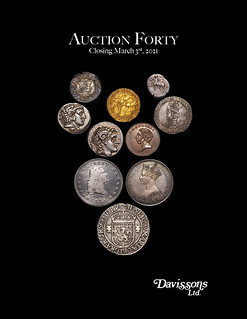 Our personal introduction to our catalogs usually launches right into talk about what you can find in these pages. I want to start somewhere else this time—discussing a few of the past owners of these pieces who deserve our thanks for the care they gave them and the fact that their collections are now available to others.
Our personal introduction to our catalogs usually launches right into talk about what you can find in these pages. I want to start somewhere else this time—discussing a few of the past owners of these pieces who deserve our thanks for the care they gave them and the fact that their collections are now available to others.
The Greek section of this sale has many superb pieces from two collections. One was a collector who left behind a file of his letters and invoices, dated around 1950, from still-remembered people and firms, an earlier era of numismatics—Spink & Son signed by L. Forrer, Glendining and Co. signed by Wm. French, and Numismatic Fine Arts on West 55th Street in New York signed by Edward Gans. Imagine a letter offering "Type of Alexander the Great with the name of Seleucos $25.00." He had a fine eye and, in that era, obviously had the pick of many choice pieces. Other choice Greek pieces in this section came from a collection formed by a scholarly collector who searched out the finest examples of the types that interested him. And thinking of earlier collections, the Roman section includes some "uncommon common" types from a collection formed in the 1920's—stylistic gems that bear a close look.
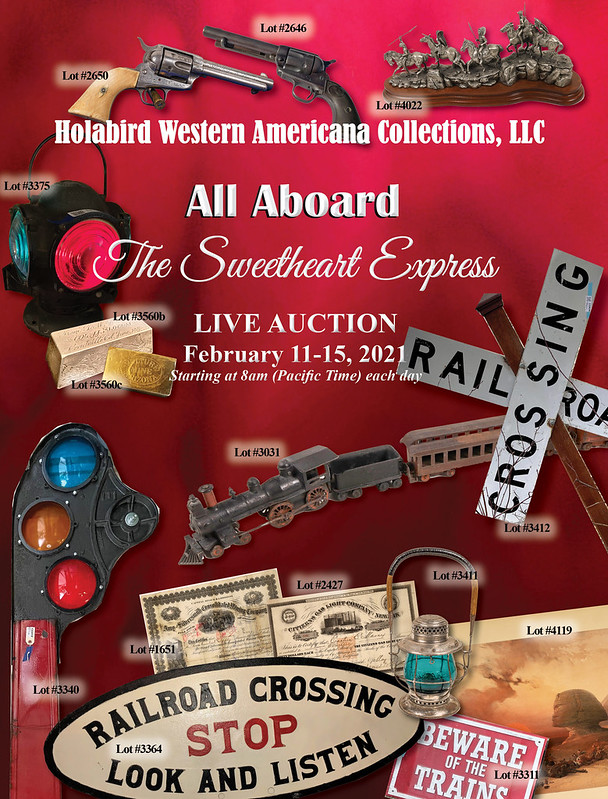
MORE HUNTER COLLECTION COLONIAL NOTES
Heritage cataloger Bruce Hagen submitted this additional selection of highlights from the Hunter collection of U.S. colonial notes. Thanks! -Editor
Revolutionary War Emblems and Mottoes
The Hunter Collection, containing notes from all thirteen colonies plus Continental Currency types, displays a wide variety of emblems and mottoes relating to the Revolutionary War: Continental Currency, with Latin text accompanying circular emblems originating in centuries-old reference books; Georgia color seal notes with a variety of imagery including Hope and Justice; the Maryland Allegorical series, featuring the graphic narrative of King George III stomping on the Magna Carta; Revere "Sword in Hand" issues, with the iconic Patriot backs; and the North Carolina 1776 $20 type featuring the rattlesnake image and anti- British "Don't Tread on Me" motto. All will be offered unreserved at auction on Thursday, February 11, 2021.
THE BOOK BAZARRE
HERITAGE OFFERS NEW YORK NATIONAL BANKNOTES
This Heritage press release features rare notes from a collection of New York National Bank Notes. -Editor
Rare Currency Note From Beleaguered Bank Highlights New York State Paper Money Collection
Heritage Auctions will be holding a special Monthly Auction in February featuring a single-owner collection of New York State National Banknotes. Hotly contested by those who collect each of the state-authorized banknotes, national currency is a competitive area of collecting. Also, with more than 12,000 different banks across the US that issued notes, there are tons of ways to collect!

AIZANOI TURKEY COIN HOARD FOUND
Here's a story from Turkey about a nice ancient coin find. -Editor
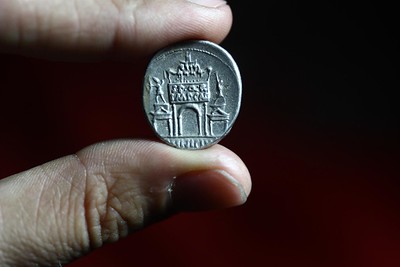
A rare collection of 651 silver coins belonging to the Roman period has been found in a jug during the ongoing excavations in the ancient city of Aizanoi, also known as the "Second Ephesus," in the western province of Kütahya's Çavdarhisar district.
Speaking to the state-run Anadolu Agency, the head of the excavations, Professor Eliz Özer, said that earlier German archaeologists were carrying out the excavation work in the ancient city, which is 48 kilometers away from the city center, but since 2011, Turkish experts have been continuing the work.
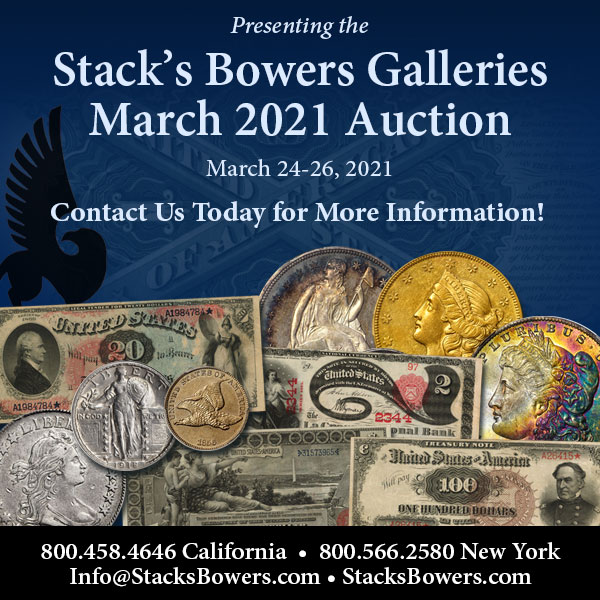
THE DIG - UNEARTHING THE SUTTON HOO TREASURE
Dick Hanscom forwarded this BBC article about the new film on the excavation of the Sutton Hoo, the magnificent buried Viking ship uncovered in England in 1939. -Editor

Netflix's The Dig tells the story of the Anglo-Saxon longship that was unearthed at Sutton Hoo in 1939. It was an extraordinary find in more ways than one, writes Neil Armstrong.
When the craft had been manoeuvred into the trench prepared for it, mourners laid the grave goods in the burial chamber in its centre. Then a mound was raised over it. And there the ship lay, moored fast in the East Anglian earth but journeying through time until, 13 centuries later on the eve of World War Two, a man called Basil Brown discovered it.
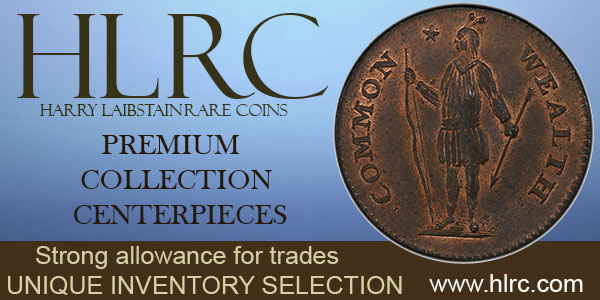
THE 2021 MORGAN DOLLAR
I didn't manage to get this one in last week's issue, but Dennis Tucker has written a nice article on the Mint News Blog about the new Morgan dollars coming out later this year. This is just an excerpt - see the complete article online for more, including a nice bibliography of books on the Morgan dollar. -Editor
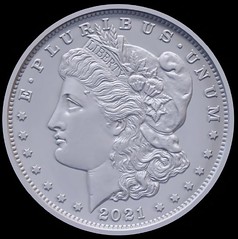
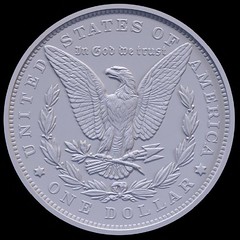
Mint rendition of the 2021 Morgan silver dollar.
For several generations, the Morgan silver dollar has ranked near the top of the list—if not sitting comfortably in the #1 spot—as the most popular classic American coin. Hobbyists collect them by date and mintmark, by die variety, and sometimes even by the roll or bag. There are folders, albums, display cases, and other ways to store and show off the hefty old coins. Entire books have been written about them. Even people who don't consider themselves coin collectors are familiar with, or at least vaguely aware of, the Morgan dollar. It's part of our national shared culture.
That awareness is about to take a sharp upward turn this year.

HARD TIMES TOKENS AND SCRIP
An article elsewhere in this issue discussed Alexandre Vattemare's 1864 article on Hard Times Tokens. Here's a recent article by Amelia Soth on the topic. Found via News & Notes from the Society of Paper Money Collectors (Volume VI, Number 32, January 26, 2021). It's a popular article and not particularly scholarly, but I was intrigued by the illustration of tokens from the Cornell University Collection of Political Americana. -Editor
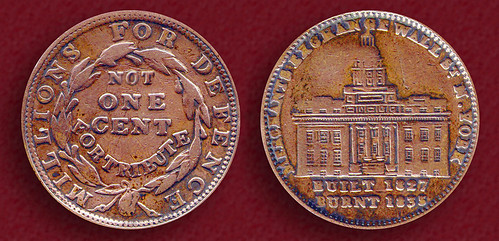
If you were in Baltimore, circa 1837, you might have bought your bread with a tiny political cartoon. Small change was hard to come by. In its absence, penny-like coins known as "hard times tokens" circulated widely, a form of unofficial currency.
Hard times tokens seem like normal pennies—until you take a closer look. To avoid charges of counterfeiting, the text on the tokens frequently proclaimed that they were "Not One Cent/But Just As Good." In the place of the familiar Lincoln's head, you might notice a ship being wrecked against the rocks, a leaping jackass, or Andrew Jackson popping out of a treasure-chest like a Jack-in-the-Box, encircled by the phrase "I take the responsibility." These images are succinct expressions of the anger and disappointment felt in the wake of the Panic of 1837 and the economic depression that followed it.

NUMISMATIC COMMEMORATIONS OF VACCINATION
American Numismatic Society Collections Manager Dr. Elena Stolyarik published an ANS Pocket Change blog article December 29, 2020 on the timely topic of numismatic commemorations of vaccination. Here's an excerpt - be sure to read the complete article online. -Editor
The year 2020, which brought to the world a coronavirus pandemic, is coming to an end. Humanity looks forward with hope to successful innovations against the new deadly virus. This is an appropriate time to pay tribute to the achievements of scientists of previous generations.
For the topic of vaccination, the name of the English doctor Edward Jenner (1749–1823), outstanding physician and pioneer of smallpox vaccination, is foremost. For centuries, smallpox swept through communities, often killing nearly a quarter of its victims and leaving many of the survivors deeply scarred or blind. In 1796, Edward Jenner demonstrated that an infection with the relatively mild cowpox virus conferred immunity against the deadly smallpox virus. Jenner even created the word "vaccination", derived from the Latin word vacca, meaning "cow". Jenner's vaccine was one of the great triumphs of medicine, which first brought smallpox under medical control and opened the way for the eventual elimination of this disease. The results from Jenner's vaccination experiments were widely circulated after their publication in 1798, and vaccination was promoted as a public health tool throughout Europe.

NEW MOMENTUM TO PUT HARRIET TUBMAN ON $20 BILL
Kellen Hoard forwarded this news item about the push to put Harriet Tubman on the $20 bill. Thanks also to Dick Hanscom and others who forwarded articles on the topic. -Editor
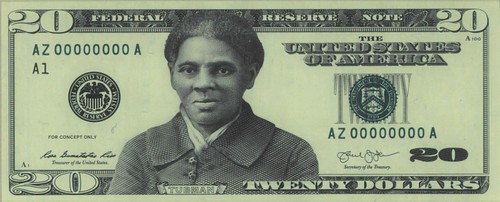
A BEP facsimile design sans security features
The Biden administration will revive the push to make Harriet Tubman the face of a new $20 bill, an effort that was shelved during former President Donald Trump's term.
"We're exploring ways to speed up that effort," White House press secretary Jen Psaki told reporters Monday after being asked if the new administration would pick up the Obama-era initiative.

RAID NETS UK'S LARGEST COUNTERFEIT SEIZURE
A recent police raid in Beckenham, England disrupted a £12 million counterfeiting scheme. -Editor
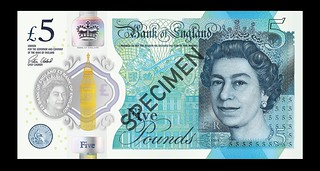 NEWS OF the UK's largest cash counterfeiting scam to date has, according to the International Hologram Manufacturers Association (IHMA), "focused fresh attention" on the vital importance of stepping up investment in effective security devices designed to protect the nation's banknotes.
NEWS OF the UK's largest cash counterfeiting scam to date has, according to the International Hologram Manufacturers Association (IHMA), "focused fresh attention" on the vital importance of stepping up investment in effective security devices designed to protect the nation's banknotes.
John Evans, Phillip Brown and Nick Winter have been jailed for their part in an organised crime group conspiracy to supply more than £12 million worth of counterfeit banknotes. The trio's imprisonment follows a lengthy and complex investigation conducted by specialist detectives from the Kent and Essex Serious Crime Directorate and which included what's believed to have been the single largest face-value seizure of fake currency in UK history in the wake of a police raid at an industrial unit located in Beckenham.

HONG KONG COUNTERFEIT BANKNOTES RISING
Bogus banknote seizures are up in Hong Kong, too. This article describes the raid of a low-quality counterfeiting operation. -Editor
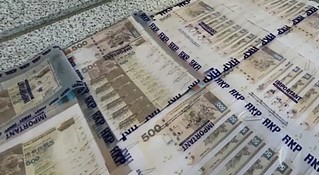 Police arrested a mother-daughter pair and seized 54 bogus HK$500 banknotes on Thursday.
Police arrested a mother-daughter pair and seized 54 bogus HK$500 banknotes on Thursday.
The number of bogus banknotes of various denominations seized in the first 11 months of 2020 rose by 68 per cent year on year to nearly 13,500, up from 8,009 in 2019, according to the latest figures.
Police seized 11,771 counterfeit HK$1,000 (US$129) banknotes between January and November, 2020, up 103 per cent from 5,785 in the whole of 2019.
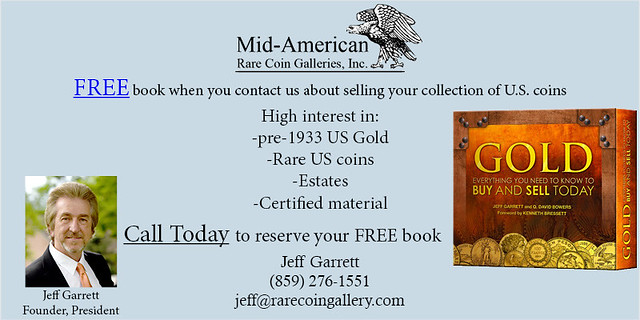
LOOSE CHANGE: JANUARY 31, 2021
Here are some additional items in the media this week that may be of interest. -Editor
New York Federal Gold Vault
Atlas Obscura has an article about the gold vault at the New York Fed. -Editor
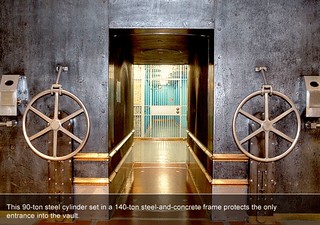 THE LARGEST ACCUMULATION OF GOLD in human history is located deep underneath the heart of Manhattan's financial district, at the New York Federal Reserve Bank. Some 80 feet beneath sidewalk level, the Fed's special vault is built into the bedrock and entrusted with deposits from central banks across the globe. Inside sits 7,000 tons of glittering gold bars—around 5 percent of all of the gold ever mined.
THE LARGEST ACCUMULATION OF GOLD in human history is located deep underneath the heart of Manhattan's financial district, at the New York Federal Reserve Bank. Some 80 feet beneath sidewalk level, the Fed's special vault is built into the bedrock and entrusted with deposits from central banks across the globe. Inside sits 7,000 tons of glittering gold bars—around 5 percent of all of the gold ever mined.
The only way into the vault is via a cylindrical entryway that rotates at the turn of a wheel. A sliver-shaped pie chunk of the cylinder has an opening, and when properly aligned with the entry hallway allows access to the treasure inside. Inside there are 122 separate mini-vaults (one for every country), plus a "library vault" for account holders with smaller deposits.
To read the complete article, see:
New York Federal Gold Vault
(https://www.atlasobscura.com/places/new-york-federal-gold-vault)
Other topics this week include Circulating Commemorative Programs. -Editor
